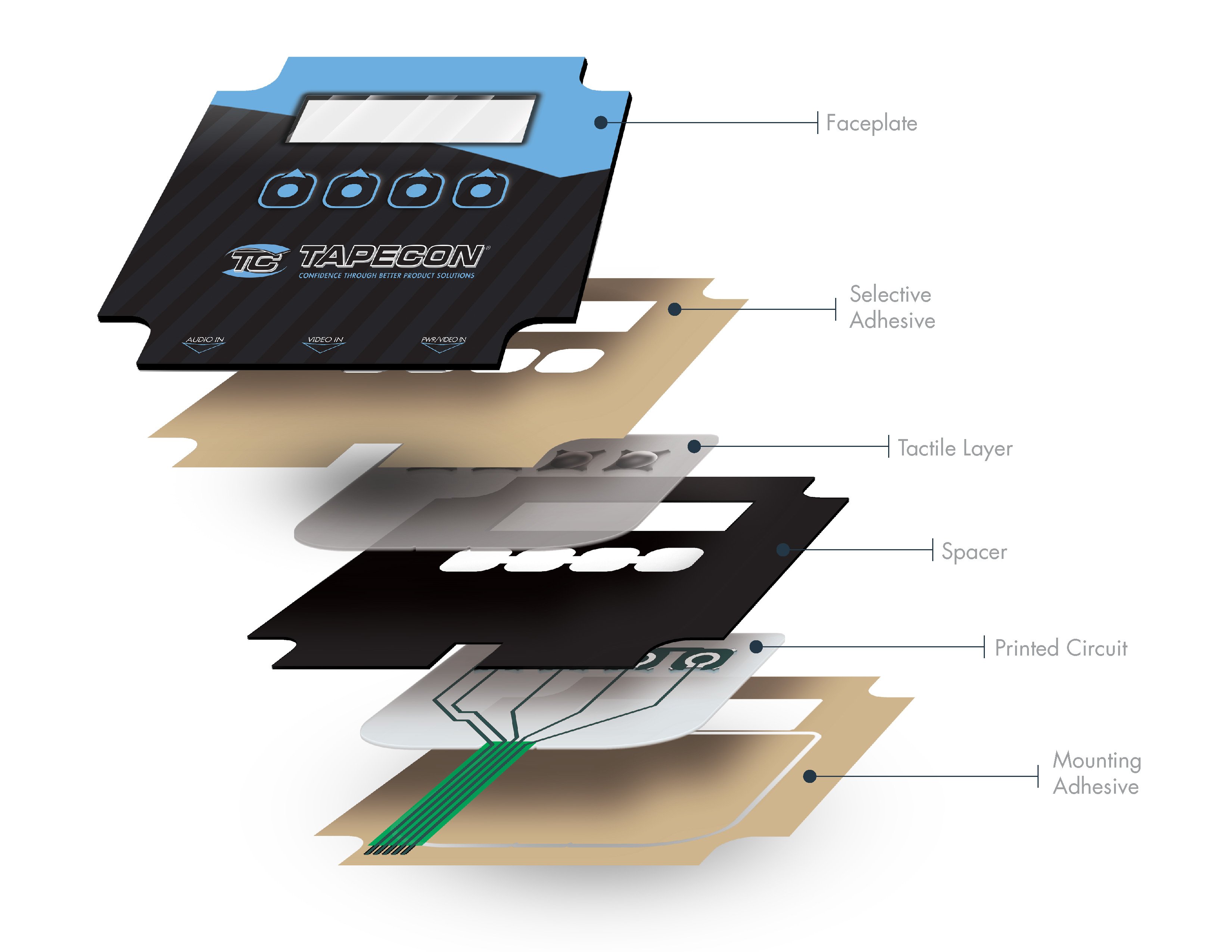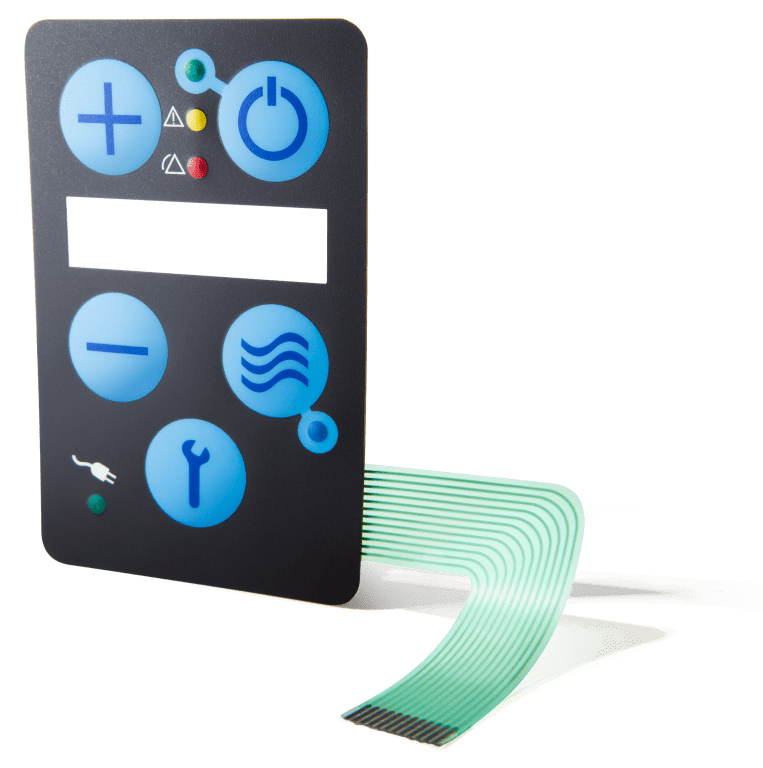Explore the Value of Membrane Switches in Streamlining Device Controls
Membrane Layer Changes Explained: A Comprehensive Overview to Their Benefits
Membrane switches over represent a functional and advanced option for creating individual interfaces throughout a selection of industries. Their multilayered design not only makes sure performance through basic pressure yet likewise provides substantial benefits, such as sturdiness and modification. As sectors significantly look for efficient and trusted control user interfaces, comprehending the particular advantages and applications of membrane changes becomes vital. However, the complexities of their layout and execution present distinct difficulties that merit closer assessment. What variables should be taken into consideration to fully leverage their possibility in modern applications?
What Are Membrane Switches?

When pressure is put on the membrane switch, the layers make call, finishing an electrical circuit. This simple system permits for a wide variety of applications, from customer electronic devices to commercial machinery. Membrane buttons are commonly designed to be resistant and waterproof to dirt and impurities, making them appropriate for atmospheres where durability is necessary.
Furthermore, the adaptability of the materials utilized in membrane switches over helps with innovative styles that can adapt various forms and dimensions. This flexibility contributes to their popularity in diverse areas, including medical gadgets, automotive controls, and home devices. On the whole, membrane switches over stand for a critical element in contemporary interface technology, linking the space between customers and electronic systems.
Trick Advantages of Membrane Layer Buttons
Amongst the myriad of interface alternatives offered, membrane changes stick out for their one-of-a-kind mix of advantages. Among the primary benefits is their portable and lightweight design, which enables integration into a large range of devices without adding substantial mass. This is particularly beneficial in applications where area is limited.
In addition, membrane changes offer resilience and resistance to environmental aspects. They are typically created with products that can withstand moisture, dirt, and various chemicals, making them suitable for rough conditions. This durability adds to a longer life expectancy compared to conventional mechanical switches.
One more significant advantage is the flexibility in customization. Membrane layer switches can be printed with various graphics, colors, and textures, enabling tailored designs that meet certain branding or useful demands. This flexibility expands to the number of layers and circuit options, supplying designers with several arrangements.
Additionally, the tactile responses given by some membrane switches over boosts user experience, making them much more instinctive to run. Lastly, the convenience of cleansing and upkeep even more solidifies membrane switches as a sensible choice in both customer and commercial applications. Membrane Switches. Overall, these vital advantages make them a favored option for several developers and manufacturers
Applications in Various Industries
How do membrane switches find their place across diverse industries? Their flexibility and functionality make them essential elements in industries ranging from health care to consumer electronics. In clinical tools, membrane layer buttons are used for their simplicity of cleaning and resistance to contamination, ensuring hygiene in settings where sterility is crucial.
In the consumer electronic devices sector, these buttons offer sleek, user-friendly interfaces that boost item appearances while keeping longevity versus deterioration. Automotive applications benefit from membrane switches over also, where they are used in control panels and control board, providing dependable performance in tough problems.
Additionally, commercial equipment utilizes membrane buttons for control panels due to their effectiveness, capability to withstand extreme atmospheres, and adjustable designs that deal with particular functional requirements. The food sector leverages membrane buttons for their simplicity of use and resistance to spills, making certain operational performance in hectic setups.
Eventually, the flexibility of membrane switches over across these varied applications highlights their essential function in modern innovation, boosting individual communication while meeting industry-specific needs. Their continued advancement promises more integration into arising fields and ingenious items.
Style and Modification Options
The style and modification options offered for membrane layer switches are important for customizing user interfaces to meet certain customer needs and aesthetic preferences. These buttons can be made in various shapes, dimensions, and formats, allowing for seamless combination right into varied applications. The flexibility in design indicates that suppliers can create unique interfaces that improve use and keep brand name identification.
Custom graphics, structures, and colors can be related to the surface area of the membrane layer button, supplying a chance for branding and customer involvement. In addition, backlighting choices, such as LED lighting, can be integrated to enhance exposure in low-light problems, hence enhancing performance.
Practical aspects can likewise be personalized, including tactile responses and actuation pressure, which can be gotten used to fit different user interactions. The selection of products, such as polyester or polycarbonate, enables for variations in sturdiness and environmental resistance, dealing with go to website the details needs of different industries.
Inevitably, the considerable layout and personalization abilities of membrane buttons make it possible for business to create aesthetically enticing and easy to use interfaces, making certain that their products meet both useful and aesthetic demands effectively. visit our website Membrane Switches.
Considerations for Execution
Carrying out membrane changes requires cautious factor to consider of various variables to guarantee optimum functionality and individual experience. Among the primary factors to consider is the desired application environment. Aspects such as exposure to wetness, severe temperature levels, and chemical substances can substantially impact the switch's performance and long life. Selecting materials that stand up to these problems is essential.

Another essential aspect is the switch's design and layout. Ensuring that the tactile feedback and actuation pressure straighten with customer assumptions improves use. Performing customer screening can supply useful insights into the optimal layout.
In addition, compatibility with digital parts need to be evaluated. The switch's circuitry need to straighten with the general system design, ensuring dependable signal transmission and minimizing disturbance.
In addition, manufacturing techniques and costs need to be examined. The option between personalized styles and conventional models can lead and influence both spending plan time.
Finally, consider repair and maintenance. Membrane buttons may call for certain cleaning and treatment procedures to keep their appearance and functionality gradually. By dealing with these factors to consider, organizations recommended you read can implement membrane layer switches that fulfill their operational demands while giving a positive customer experience.

Conclusion
In final thought, membrane layer switches over stand for a versatile and resilient control interface appropriate for a large array of applications throughout multiple industries. Membrane Switches. As innovation proceeds to advance, the relevance of membrane switches in modern gadgets stays considerable, using both capability and visual allure.
Membrane changes represent a advanced and flexible remedy for developing customer interfaces throughout a selection of fields.Recognizing the basic parts of modern-day digital user interfaces, membrane switches are a type of user interface device that consist of adaptable, slim layers of product. Generally, membrane layer switches over stand for a crucial element in modern user interface technology, connecting the gap between users and electronic systems.
Among the myriad of user interface options readily available, membrane layer changes stand out for their special combination of advantages.The layout and modification choices available for membrane layer buttons are critical for tailoring interfaces to meet specific customer requirements and visual choices.